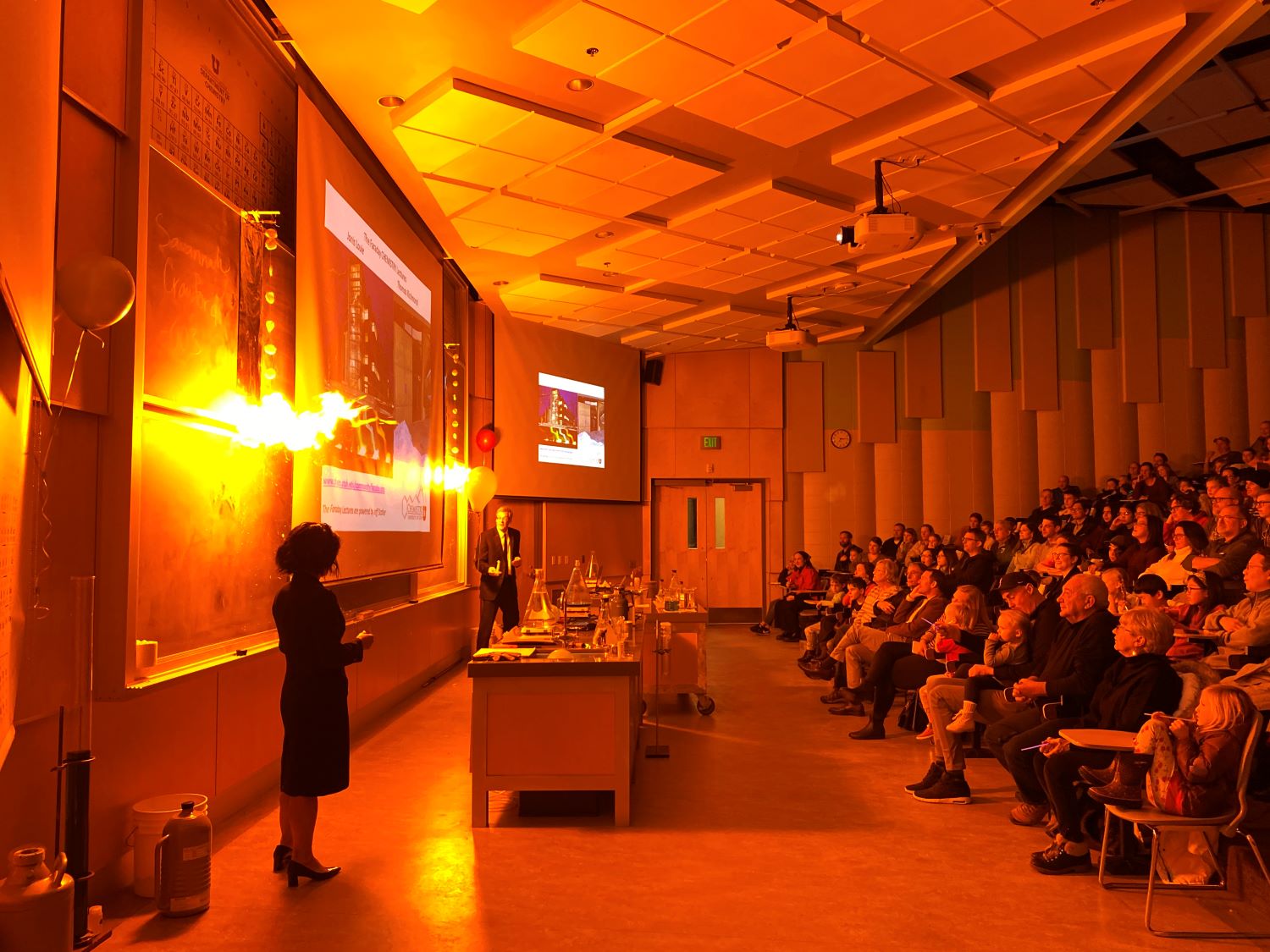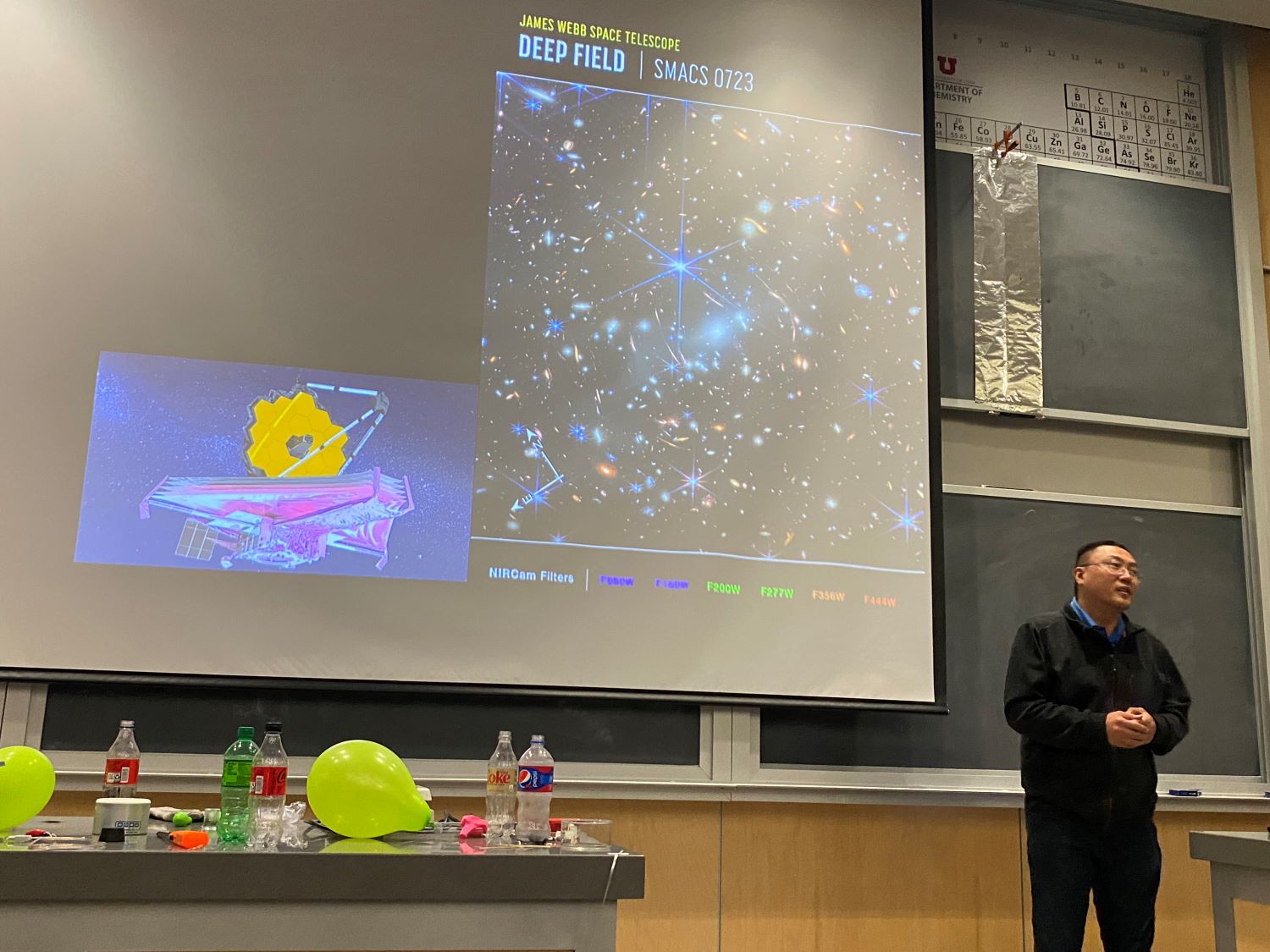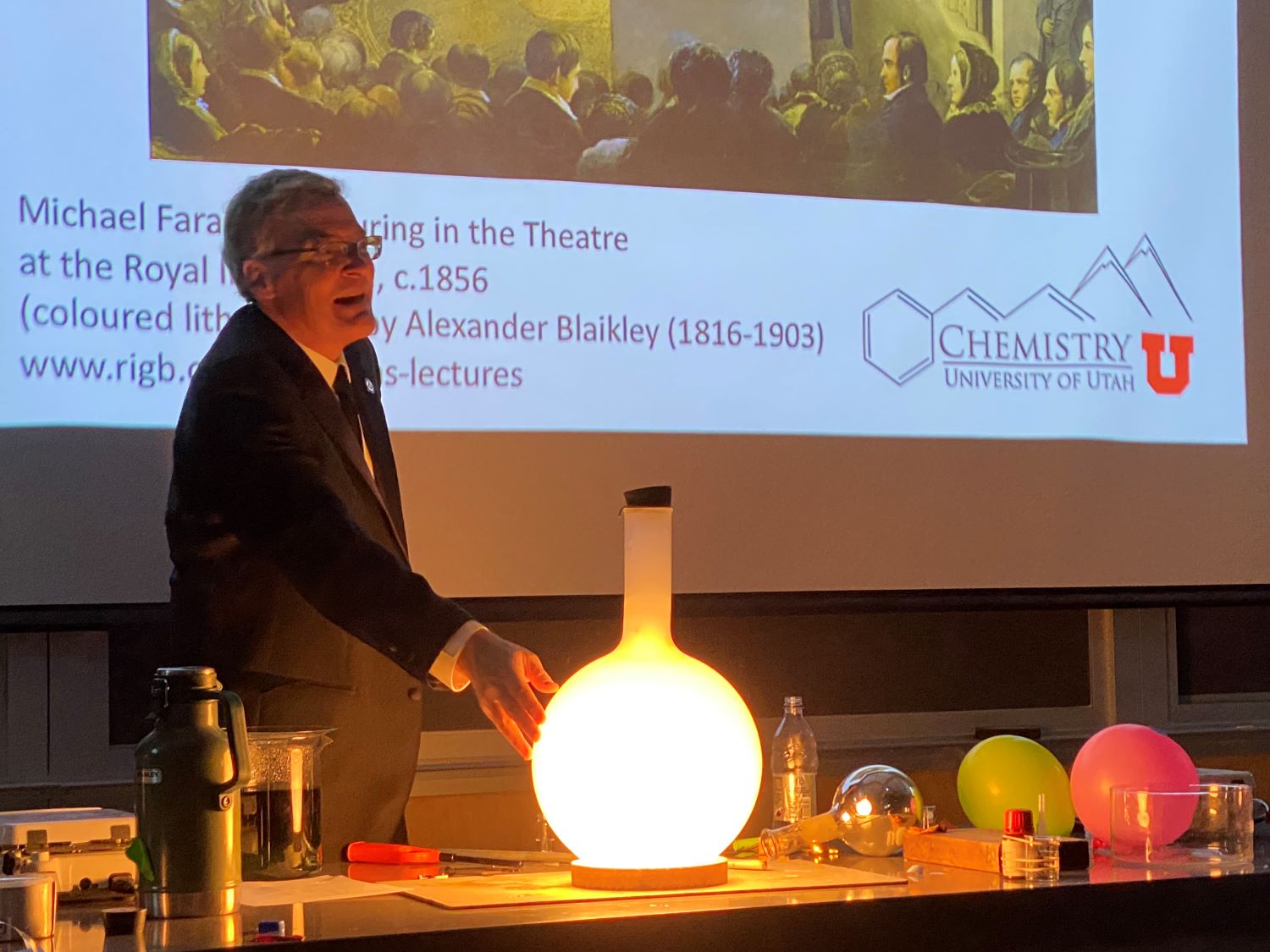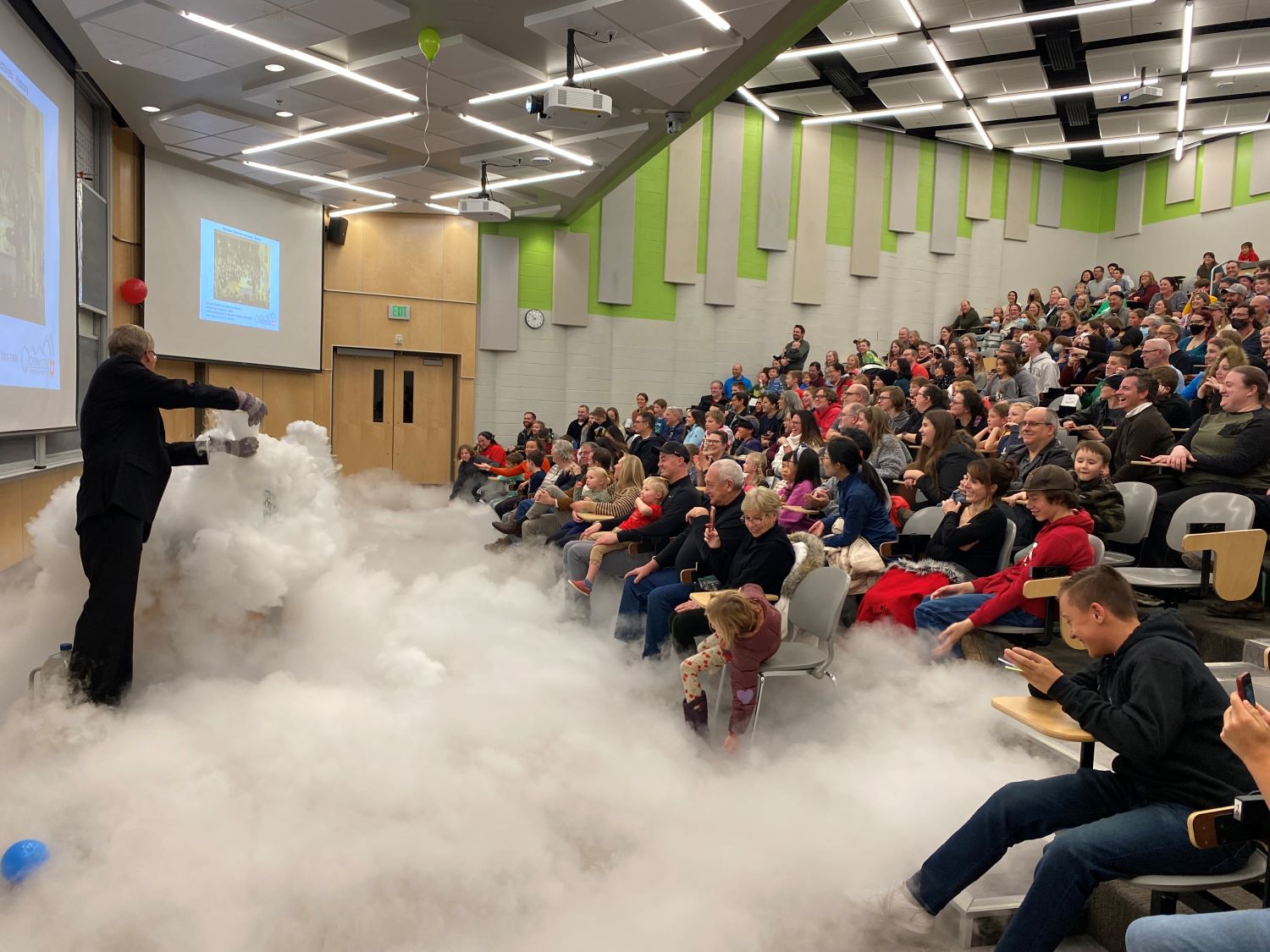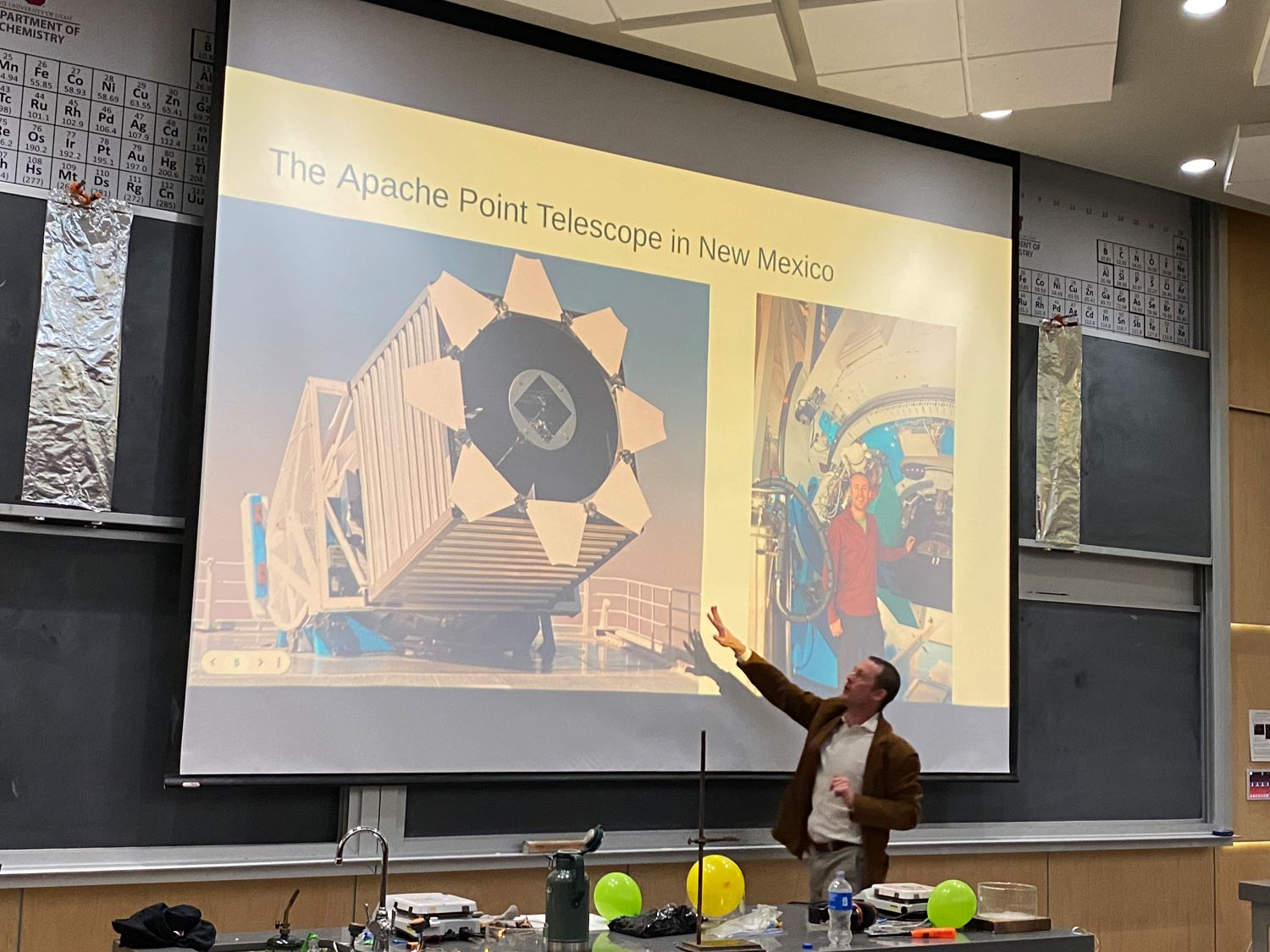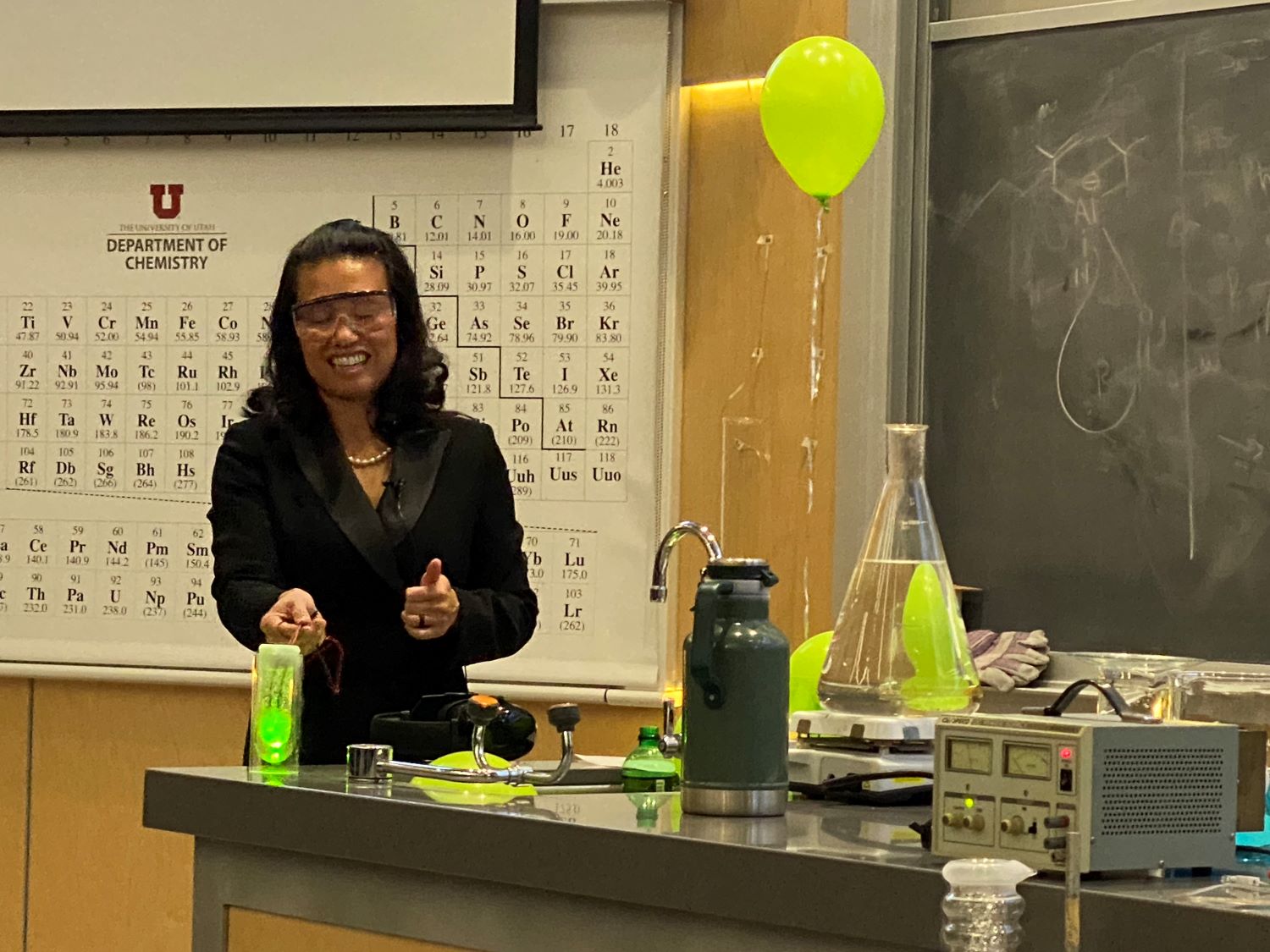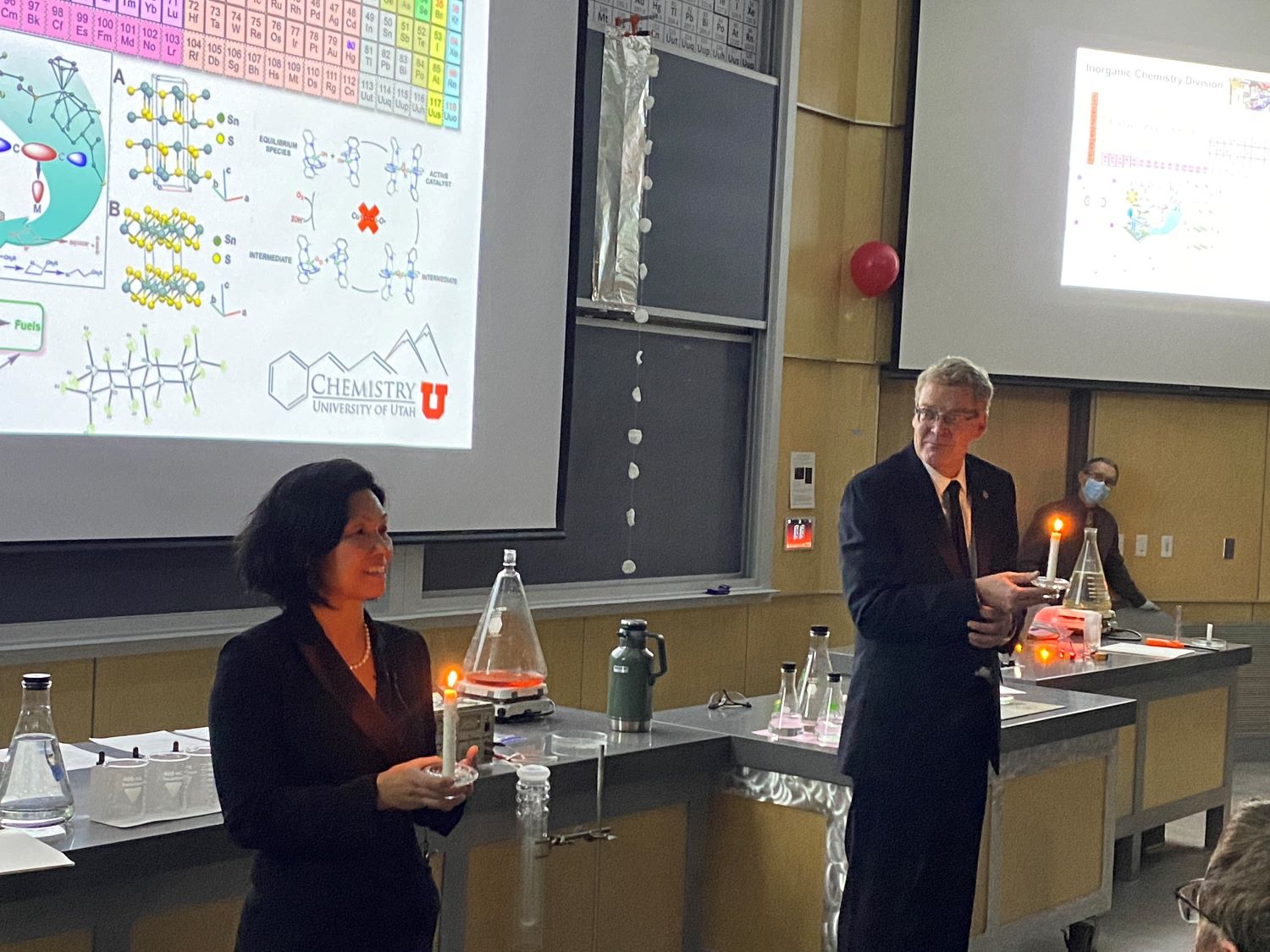Professors Janis Louie and Tom Richmond and associate professor Michael Grünwald, with support from professor Jeff Statler, perform an extraordinary series of chemical experiments that educate and entertain audiences of all ages. This free, family-friendly event is a Salt Lake holiday favorite.
The lectures are named after Michael Faraday, the discoverer of electromagnetic induction, electro-magnetic rotations, the magneto-optical effect, diamagnetism and field theory. Faraday served as director of the Royal Institute in London from 1825-1867. A gifted lecturer, he began presenting his Christmas Lectures for Children at the Royal Institute in the mid-1820s.
In this tradition, the Department of Chemistry has given the annual Faraday Lectures since 1981.
Faraday Lectures 2024
The 2024 Faraday Lectures will be held on December 5, 2024 and December 6, 2024 at 7 pm. The December 6, 2024 lecture is SOLD OUT.
Please email Nelly Divricean if you have questions about the Faraday Lectures.
Past Faraday Lectures
-
Professors Janis Louie and associate professor Michael Grünwald, with support from professor Jeff Statler, presented the 2023 Faraday Lectures. Kevin Perry, Department Chair, Atmospheric Sciences, University of Utah discussed the Chemicals of the Great Salt Lake Flats in a facinating presentation.
Just in case you missed it: https://fb.watch/pkgf91rFCT/
-
After a COVID-induced break, December 2022 marked the return to live presentations of the Faraday Chemistry Lectures in the Department, with more than 1,000 people crowding into the Henry Eyring Building, room 2008, over three nights. Of course, the lectures featured traditional candles, colors, reactions, bangs, and flames.
Making note of Michael Faraday’s contributions to physics as well as chemistry, Professors Janis Louie and Thomas Richmond welcomed three colleagues from the Department of Physics and Astronomy professors Zheng Zheng, Anil Seth, and Kyle Dawson, to share some of the chemistry of the Universe as revealed by recent advances in the field. Images from JSWT Webb Telescope and the Sloan Digital Sky Survey were included. These scientific interludes enhanced the scope of the lectures to cover over 13 billion years since the Big Bang.

